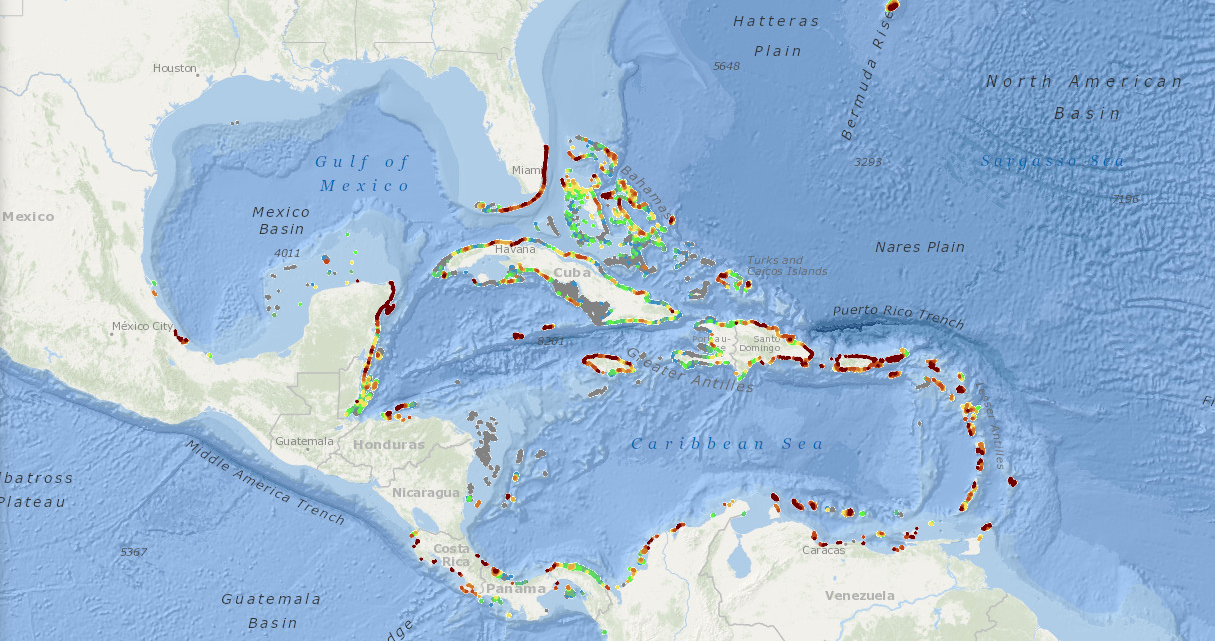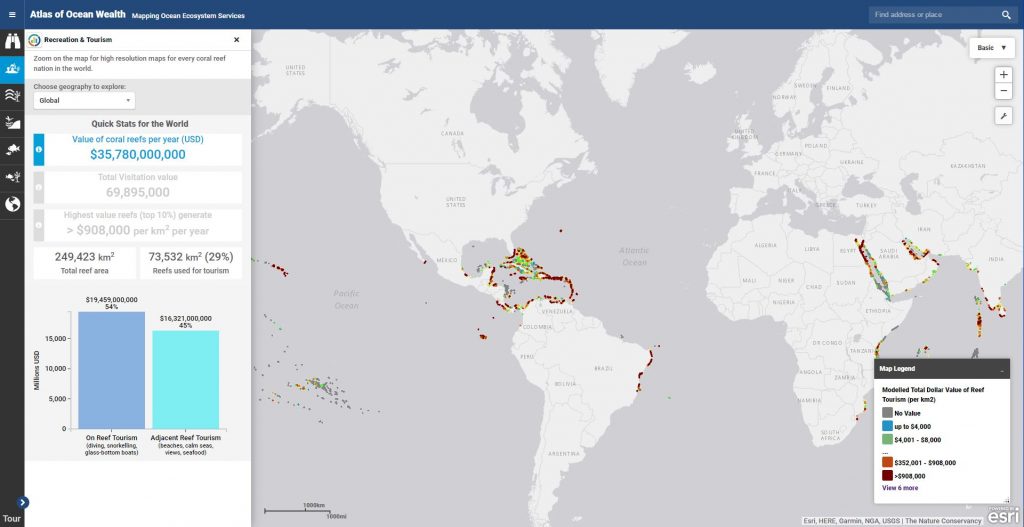Coral Reef Tourism: Data Highlights Conservation Opportunity for Industry
Coral reefs are the poster child of nature-based tourism. Many visitors come specifically to visit the reefs themselves, to swim over shimmering gardens of coral amongst hordes of fish, but many more are unknowing beneficiaries of the reefs as producers of sand, coastal protection, food and remarkable vistas. These travelers support whole industries—hotels, shops, tours, airlines and supply chains that cater to their every need, from dive equipment to food.
Along with traditional data-driven academic research, and the emerging fields of crowd-sourced and social media-related data, a combination of tourist datasets that included hotel rooms, general photographs, underwater photographs, dive centers
and dive site were used to render and improve crude national statistics, and also to cross-validate with independent datasets – for example using hotel locations alongside photo-intensity to independently show tourist spread at national levels, and using dive-sites and locations of underwater photographs to distinguish between tourism activities that take place directly on the reef (e.g., snorkeling, diving) versus tourism activities that indirectly benefit from the presence of coral reefs (e.g., enjoying pristine beaches, calm waters, and fresh seafood).
The models found that coral reefs represent an economic value to the world of $36 billion per year, and support over 70 million trips annually, making these fragile and beautiful organisms a powerful engine of coastal and marine tourism.
The world’s coral reefs perform many essential roles. They are home to the fish that provide the food – and often livelihoods – for nearly 100 million people. They also act as barriers against the worst impacts of storms, protecting the beaches and the millions of people who live around and rely upon them. By modelling the economic contributions of coral reefs to global and local economies, this work can be used to persuade governments of the importance of investing in their protection.
A paper describing this work was published in the journal Marine Policy in 2017. The accompanying mapping application allows users to view and compare economic and visitation values of coral reef tourism around the world. Users can also focus on specific geographies, such as Florida, the Bahamas, the Eastern Caribbean, and Micronesia, to view a more fine-scale distribution of values in these regions.
- See all of our work on recreation and tourism mapping
- Visit the recreation and tourism data portal
- Learn more about the World Travel and Tourism Council’s Tourism for Tomorrow Awards



